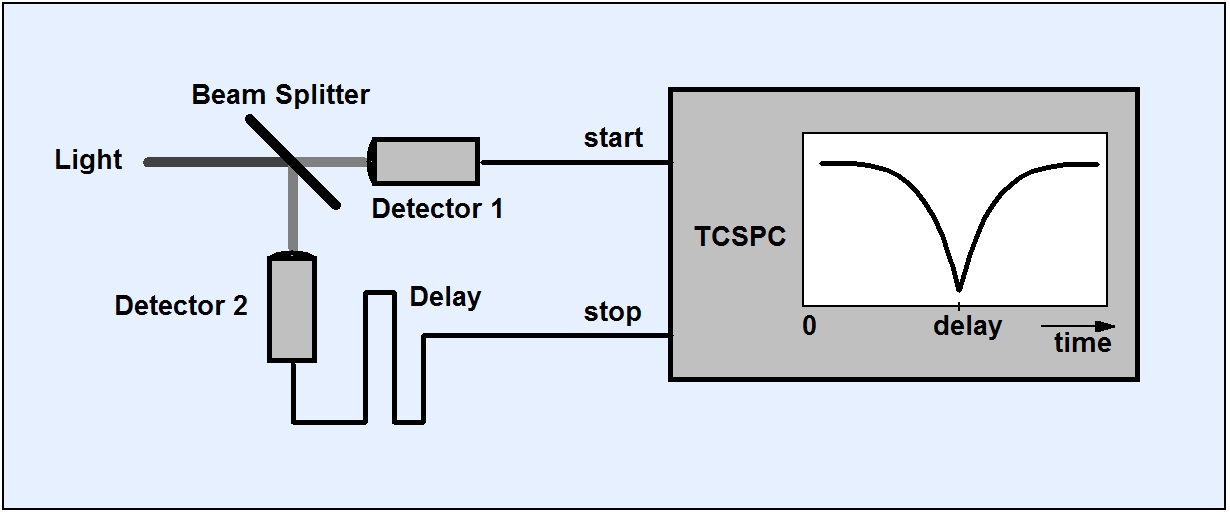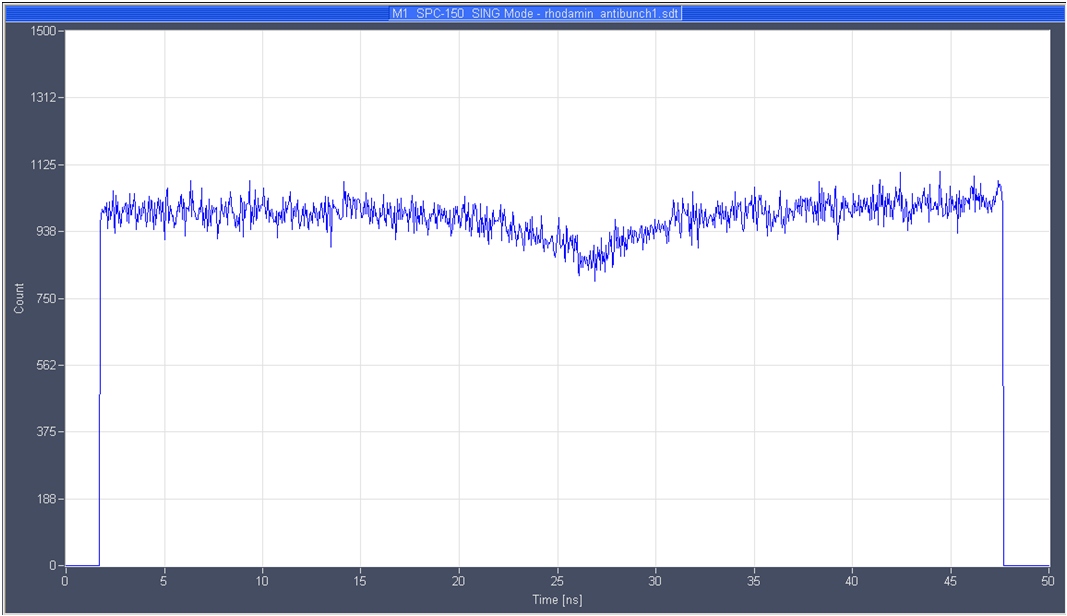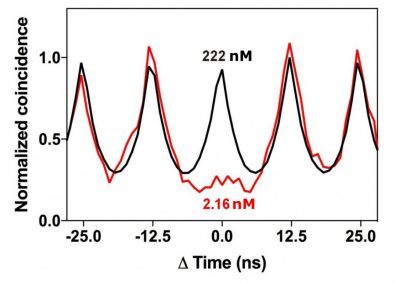
Principles
Understanding Antibunching: How It Works in Quantum Dots and Single Molecules
The term ‘Antibunching’ refers to light the photons of which appear at more regular times than in a classic light signal. In a light signal emitted by a classic source, such as thermal emission from a black body or fluorescence from a large number of molecules, the photons are emitted at random times. This is not necessarily the case when fluorescence comes from single emitters, such as single molecules or quantum dots. After excitation, a single emitter cannot be re-excited (and give off a second photon) until it has returned from the excited state. That means, the emission of several photons becomes increasingly unlikely as the time between the photons gets shorter than the excited-state lifetime.
Hanbury-Brown-Twiss Experiment: Measuring Anti-Bunching Effects with TCSPC
Antibunching effects can be measured by TCSPC in the classic Hanbury-Brown-Twiss experiment [1]. The principle is shown in the figure below. The investigated light signal is split by a 1:1 beam splitter, and the two light signals are fed into separate detectors. One detector delivers the start pulses, the other the stop pulses of a TCSPC device. The stop pulses are delayed by a few ns to place the coincidence point in the centre of the recording-time interval [4]. The setup delivers a histogram of the time differences between the photons at both detectors. The histogram has a dip at the coincidence point. The depth of the dip depends on the number of independent emitters in the observation volume; the shape of the dip depends on the excited-state lifetime [2, 3].

Antibunching in CW Excitation: Insights from Hanbury-Brown-Twiss Experiment
The Hanbury-Brown-Twiss experiment can be run with CW excitation or with pulsed excitation. An antibunching curve recorded with CW excitation is shown in the figure below. The curve was recorded by a DCS-120 Confocal FLIM system [5]. The two detectors of the system were connected to the start and stop (CFD and SYNC) inputs of one of the two SPC-150 modules. The stop signal was delayed by 5 m of cable, i.e. by 25 ns. The sample was a diluted fluorescein solution. It was excited at 488 nm, with the laser switched to the CW mode.

Pulsed Excitation and Antibunching: Exploring the Correlation Peaks
When the Hanbury-Brown-Twiss experiment is performed with pulsed excitation the result shows several correlation peaks spaced by the period of the excitation pulses. If antibunching occurs the amplitude of the central correlation peak becomes smaller. The effect is observed best with ultra-short pulses. A molecule excited by one pulse is then unlikely to give off a photon and be excited by the same pulse again. The reduction in amplitude depends on the number of independent emitters in the observation volume. If there is no more than one emitter at a time the amplitude becomes zero.
mNeonGreen as a Single Emitter: Antibunching Curves at Different Concentrations
An example is shown in the figure below. A fluorescent protein, mNeonGreen, was excited by two-photon excitation with a Ti:Sa laser. The photons were detected by two HPM-100-40 hybrid detectors and recorded by a SPC-150 TCSPC module. The figure shows curves for two different concentrations. At low concentration the central peak disappears, showing that mNeonGreen is acting as a single emitter.

References
- Hanbury-Brown, R.Q. Twiss, Correlation of photons in two coherent beams of light, Nature 177, 27-29 (1956)
- Paul, Review of Modern Physics, 54 (4), 1061-1102 (1982)
- Basché, W.E. Moerner, M. Orrit, H. Talon, Photon antibunching in the fluorescence of a single dye molecule trapped in a solid, Phys. Rev. Lett. 69, 1516 (1992)
- Becker, The bh TCSPC Handbook. Available on www.becker-hickl.com
- Becker & Hickl GmbH, DCS-120 Confocal and Multiphoton FLIM Systems, user handbook. Available on www.becker-hickl.com
